Birds, ladybugs and praying mantises are the gardener’s best friends when it comes to insect control. Birds can be encouraged into the garden by providing a feeder, a birdbath, or by providing plants that grow berries for them to eat.
Ladybugs are now for sale by the pint, quart or gallon. The average-sized garden can get by on a quart or less, as there will be about 25,000 to 30,000 bugs per quart. The cost is generally less than five dollars a quart. The average adult ladybug consumes between 40 and 50 aphids a day.
Praying mantis cases are also available and each one hatches up to 400 young. The cost is rather nominal for a case. A few gardeners have reported that this insect disappears rather rapidly from the garden, so you might want to experiment with just a few to begin with. They will eat any insect they can catch.
To create the perfect growing environment for your Hydroponics project, and to ensure the optimum growing conditions to produce a beautiful, tender, dirt-free, flavorful product. Although bringing in good bugs to eliminate a bad bug problem might not always solve the problem, you might have to resort to a pesticide. In cases like this, our staff is very educated and can direct you to the best product to use.
When possible, it is always recommended to use these guys to fend off the “Bad Bugs” that might take home in your hydroponic garden. The important thing to remember is that these bugs are a protector of your plants and you do not want to eliminate them.
Good Bugs

Each Aphid Predator larva must eat 10 aphids to reach full development, but will happily eat many more if they are available. Great for indoors because they do not fly toward the light. For a small indoor garden, one release of 100-250 predators will get you started.
 Many commercial green-houses use Whitefly Parasites as their only whitefly control. These eggs are glued to small cards and shipped ready to hatch and parasitize pest larvae. Use 500 parasites up to four times to control whitefly infestations in a small home greenhouse.
Many commercial green-houses use Whitefly Parasites as their only whitefly control. These eggs are glued to small cards and shipped ready to hatch and parasitize pest larvae. Use 500 parasites up to four times to control whitefly infestations in a small home greenhouse.
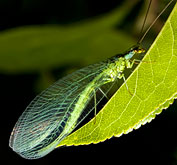 This excellent all-purpose garden predator devours aphids, mealybugs, soft scale, whiteflies and the eggs of other insects such as spider mites and thrips. Shipped as eggs, these beneficials are best applied 5,000 eggs per acre.
This excellent all-purpose garden predator devours aphids, mealybugs, soft scale, whiteflies and the eggs of other insects such as spider mites and thrips. Shipped as eggs, these beneficials are best applied 5,000 eggs per acre.
 An adult Ladybug can eat thousands of aphids and other pests in its lifetime. Good for small and large areas.
An adult Ladybug can eat thousands of aphids and other pests in its lifetime. Good for small and large areas.
Controls many species of flies by killing their pupae before flies hatch. In its 3-4 week lifecycle, each parasite kills 50 flies. Use anywhere nuisance flies breed. Release 5000 every two weeks for a large compost pile or 3-4 head of livestock.
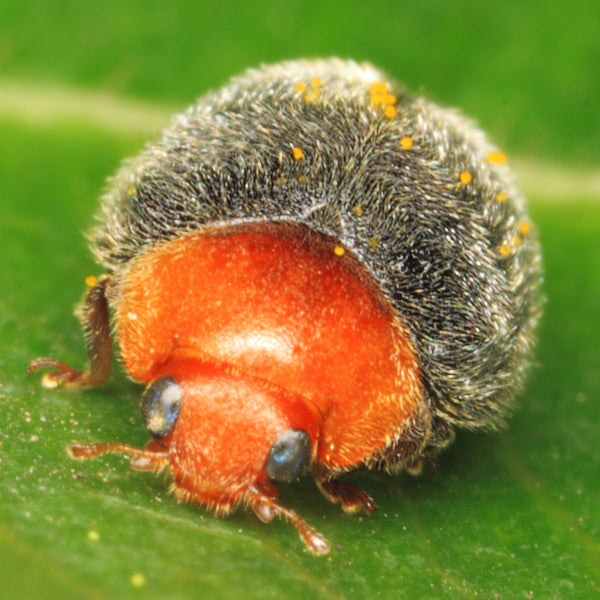 Predators of small insects, these tiny black ladybugs are effective, proven beneficial insects that have been used commercially for over 100 years. They really enjoy mealybugs but will eat aphids and scale when the mealies get scarce. Apply 2-5 per infested plant or one for every two feet of planted area. Repeat about twice a year as needed.
Predators of small insects, these tiny black ladybugs are effective, proven beneficial insects that have been used commercially for over 100 years. They really enjoy mealybugs but will eat aphids and scale when the mealies get scarce. Apply 2-5 per infested plant or one for every two feet of planted area. Repeat about twice a year as needed.
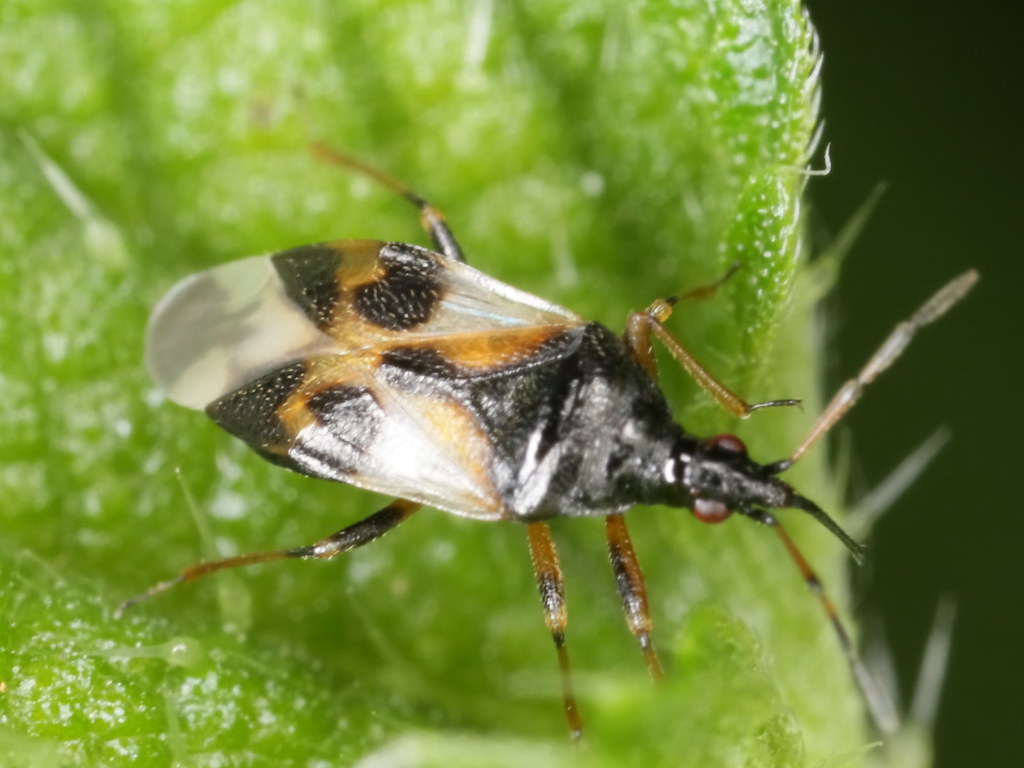 Pirate Bugs (Orius insidiosis) are used on many crops to control thrip, aphid, spider mite and whitefly populations. Release 5-10 per 100 square feet. For extreme thrip infestations, use in conjunction with Thrip Predators.
Pirate Bugs (Orius insidiosis) are used on many crops to control thrip, aphid, spider mite and whitefly populations. Release 5-10 per 100 square feet. For extreme thrip infestations, use in conjunction with Thrip Predators.
 A Praying Mantis can grow to be four inches long in just one season and will feed on almost any insect it can overcome. Allow several weeks of warm weather for hatching.
A Praying Mantis can grow to be four inches long in just one season and will feed on almost any insect it can overcome. Allow several weeks of warm weather for hatching.
 Spider Mite Destroyers breed twice as fast as spider mites and eat up to five mites or 20 mite eggs every day! Over time, your spider mite populations will dwindle. To control spider mites in six weeks, estimated use is one predator for every 20 spider mites.
Spider Mite Destroyers breed twice as fast as spider mites and eat up to five mites or 20 mite eggs every day! Over time, your spider mite populations will dwindle. To control spider mites in six weeks, estimated use is one predator for every 20 spider mites.
 Nature’s alternative to chemical insecticides, Fungus Gnat Predators feed on the larvae of fungus gnats and other small soil-dwelling creatures including thrips, mites, and springtails. Five thousand predators treat up to 200 square feet of growing surface.
Nature’s alternative to chemical insecticides, Fungus Gnat Predators feed on the larvae of fungus gnats and other small soil-dwelling creatures including thrips, mites, and springtails. Five thousand predators treat up to 200 square feet of growing surface.
 Predator Mites usually gain control of spider mite infestations after 4 weeks. Release 100 mites per 25 square feet. Predator mites will be effective in a wide variety of conditions: from 55-90 degrees Fahrenheit and from 45-90% relative humidity.
Predator Mites usually gain control of spider mite infestations after 4 weeks. Release 100 mites per 25 square feet. Predator mites will be effective in a wide variety of conditions: from 55-90 degrees Fahrenheit and from 45-90% relative humidity.
 These predators feed on immature thrips (soil and leaf pupating) and an occasional spider mite as well. Use 100-500 per plant or 200,000 per acre to control thrip infestations. For maximum effectiveness, humidity must remain between 70% and 85%.
These predators feed on immature thrips (soil and leaf pupating) and an occasional spider mite as well. Use 100-500 per plant or 200,000 per acre to control thrip infestations. For maximum effectiveness, humidity must remain between 70% and 85%.
Beneficial Nematodes control over 250 different insects in the soil, including weevils, loopers, borers, moths, and fleas. They are harmless to earthworms and leave plants alone. Not to be confused with pest nematodes, beneficial nematodes are parasitic, and invade the bodies of their prey, leaving behind the dead insect carcasses. One batch fits onto a small, 2″ sponge and will cover up to 2,000 square feet. To use, submerge the sponge in water and soak into soil with a watering can or pressure-sprayer. Nematodes may also be injected into borer holes with a syringe. If necessary, Beneficial Nematodes may be stored in the refrigerator (40-50 degrees F) for up to 2 months.
Bad Bugs
 Description: They are very small with light colored bodies. They leave a sticky residue on the leaves.
Description: They are very small with light colored bodies. They leave a sticky residue on the leaves.
Treatment: Remove damaged leaves, wash plant leaves with warm water for a week then spray an insecticidal soap onto leaves.
 Description: Most kinds of caterpillar are considered plant pests and will eat the leaves.
Description: Most kinds of caterpillar are considered plant pests and will eat the leaves.
Treatment: Pick off by hand.
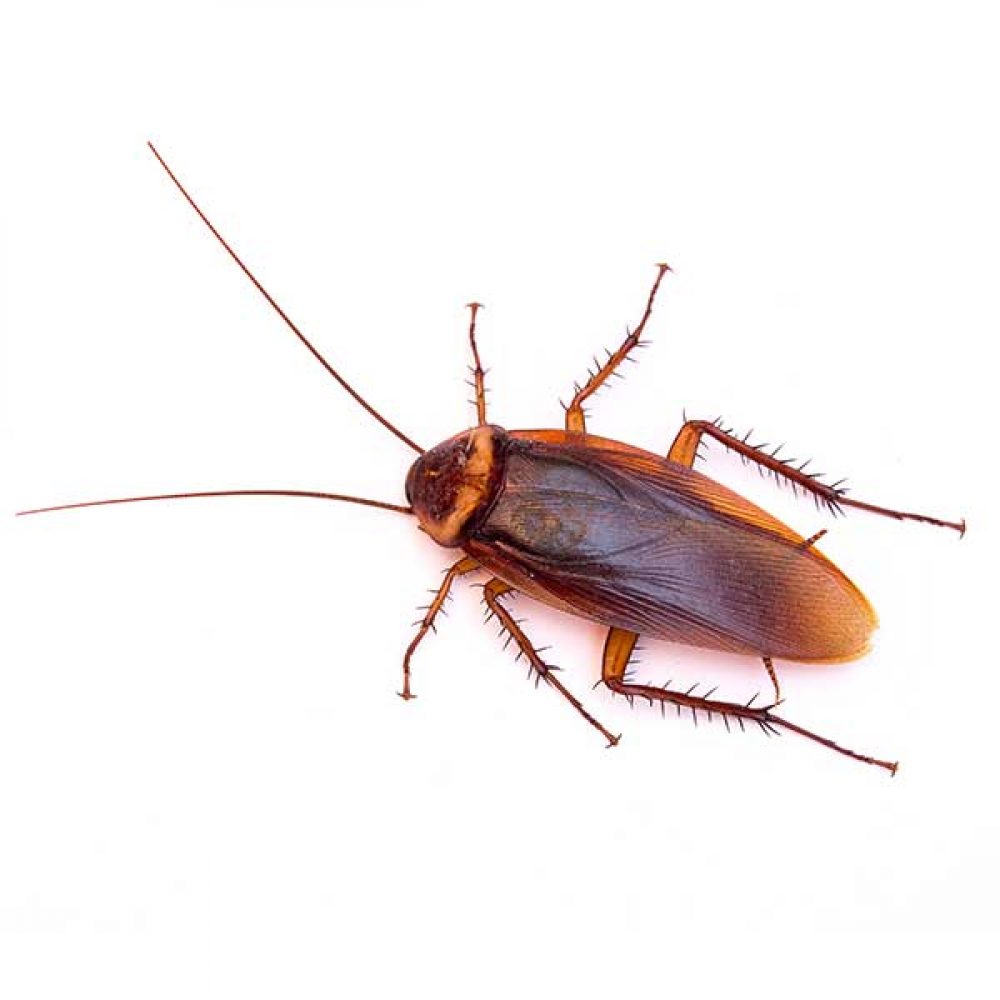 Description: Small dark colored insects with beetle like bodies.
Description: Small dark colored insects with beetle like bodies.
Treatment: Pick off by hand if you can catch them. Remove any organic debris from the base of the plant. Set out roach traps.
 Description: Small worm type insects that curl up into a ring shape. They eat through plant roots and topple the plant.
Description: Small worm type insects that curl up into a ring shape. They eat through plant roots and topple the plant.
Treatment: Not too common in hydroponics – if found, spray with insecticide.
 Description: Small, 1 inch long caterpillars who bore into plant stems and eat them from the inside out.
Description: Small, 1 inch long caterpillars who bore into plant stems and eat them from the inside out.
Treatment: Spray with insecticide.
 Description: The hatched offspring of tiny black flies. The maggot offspring attack plant roots.
Description: The hatched offspring of tiny black flies. The maggot offspring attack plant roots.
Treatment: Discard any damaged plants, spray with insecticide. Not too common in a hydroponics garden.
 Description: Small, 1/8 inch long, wedge shaped insects that suck the sap through the plant leaves.
Description: Small, 1/8 inch long, wedge shaped insects that suck the sap through the plant leaves.
Treatment: Pick off by hand and apply insecticide if needed.
 Description: Small bugs create white, powdery masses on leaf stem joints.
Description: Small bugs create white, powdery masses on leaf stem joints.
Treatment: Scrape off and spray with insecticide.
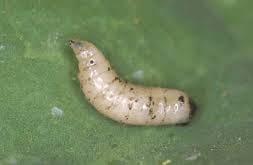 Description: Fly larvae that hatch at the base of the plants and eat the roots.
Description: Fly larvae that hatch at the base of the plants and eat the roots.
Treatment: Not too common in hydroponics gardens. If found, spray with insecticide.
 Description: Tiny waxy growths on the underside of leaves and on stems.
Description: Tiny waxy growths on the underside of leaves and on stems.
Treatment: Scrape off and isolate plant, if possible. Wash leaves with warm soapy water and apply insecticide if needed.
 Description: Small, very destructive, striped back beetles 1/4 inch long. As adults, these plant pests eat leaves, and as larvae eat roots.
Description: Small, very destructive, striped back beetles 1/4 inch long. As adults, these plant pests eat leaves, and as larvae eat roots.
Treatment: Use insecticidal soap.

Treatment: Clean off all nearby organic debris and spray with insecticide.
 Description: Tiny, white flying bugs
Description: Tiny, white flying bugs
Treatment: Very resilient. Spray with insecticide or something stronger. Also spray all surrounding plants.
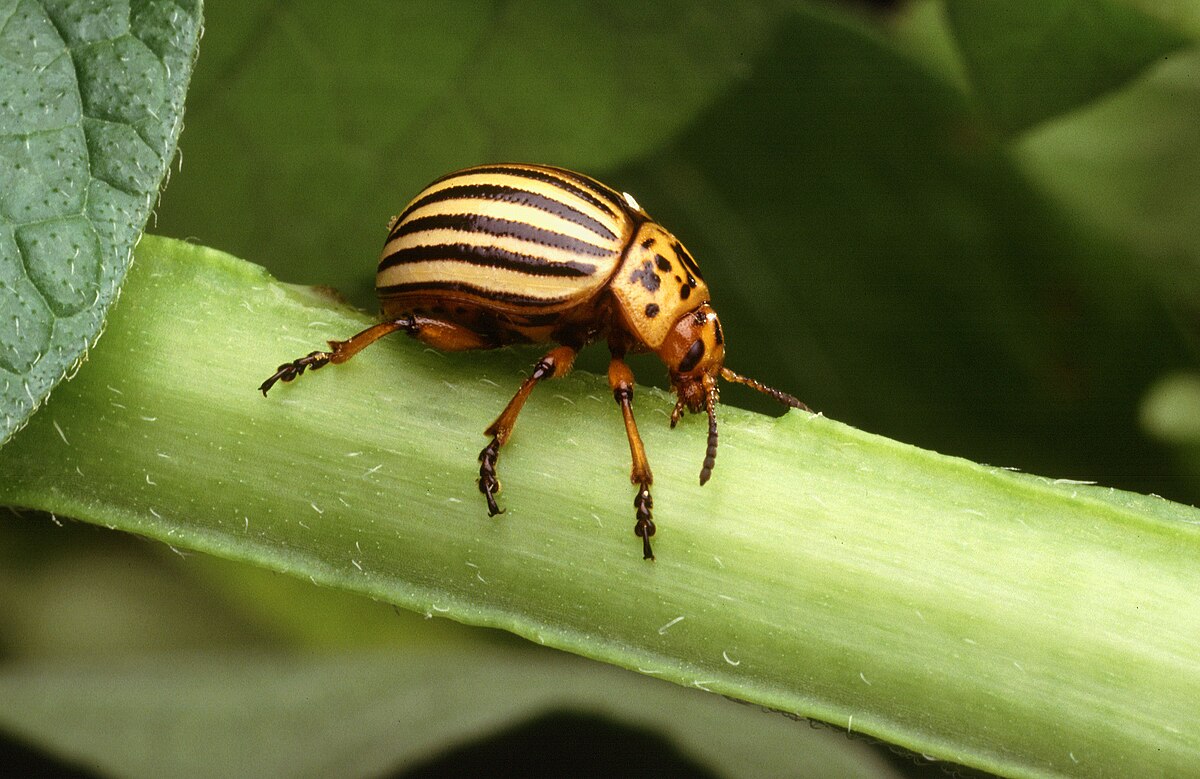 Description: Inch long striped beetles and their larvae will eat everything on a plant.
Description: Inch long striped beetles and their larvae will eat everything on a plant.
Treatment: Pick off by hand and optionally, spray with insecticide.
![]() Description: Small dark brown centipede-like insects with a pincer tail.
Description: Small dark brown centipede-like insects with a pincer tail.
Treatment: Pick off by hand (they usually come out at night).
 Description: Small velvety green caterpillars that eat plant leaves.
Description: Small velvety green caterpillars that eat plant leaves.
Treatment: Spray with insecticidal soap.
 Description: Small, 1/2 inch beetles will eat roots and leaves, leaving only the veins.
Description: Small, 1/2 inch beetles will eat roots and leaves, leaving only the veins.
Treatment: Wash with soap.
 Description: Red, yellow or green microscopic bugs forming cobwebs.
Description: Red, yellow or green microscopic bugs forming cobwebs.
Treatment: Isolate plant if you can, wash leaves with warm, soapy water and spray with insecticide.
 Description: Very small and slender bugs leaving dark blobs on the leaves.
Description: Very small and slender bugs leaving dark blobs on the leaves.
Treatment: Remove bugs by hand, wash leaves with water and spray insecticide.
